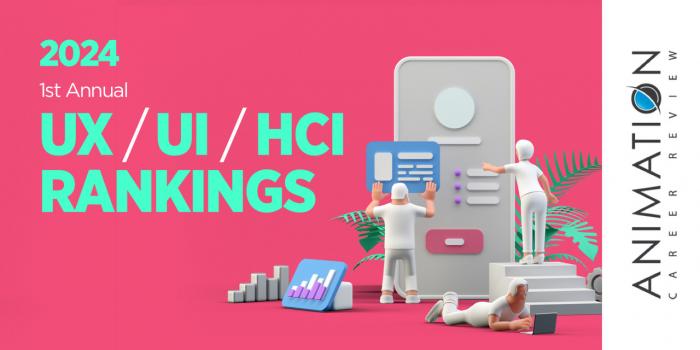The Jarvis College of Computing and Digital Media (CDM) at DePaul University (DePaul) houses the School of Design (SoD). Within the SoD are two programs for students who would like to pursue advanced studies in UX/UI/HCI. Options include the Human-Computer Interaction MS and the PhD in Human Centered Design. Both programs are interdisciplinary with access to the CDM Usability Lab and opportunities to contribute to organizations such as XD Roundtable and the Chicago Interaction Design Association.
The HCI MS explores focuses on areas such as interaction design, prototype development, exploratory user research, information architecture, and ICT evaluation. Course examples include Scripting for Interactive Systems; HCI Design Fundamentals I-II; Prototyping and Implementation; Interaction Design and Information Architecture; Information Architecture and Content Strategy; and Usability Evaluation Methods.
To enhance the degree, students have opportunities to take both HCI and Non-HCI electives. Marketing Management; Managing Change for Digital Transformation; Game Design Workshop; and Collaborative Projects Technologies for Leading Projects are just a few Non-HCI electives. Examples of HCI electives include Designing for Content Management Systems; UX Strategy and Web Analytics; Multimedia; Social Interaction Design; Design Ethnography; and User Experience Design Practicum.
The HCI MS culminates with the Human-Computer Interaction Capstone, where students work in teams to design, evaluate, and implement a user interface intensive project.
Graduates of the HCI MS programs at DePaul University are prepared to pursue leadership roles in HCI, user experience, user interface, computing, and interaction design in industries such as software development, healthcare, marketing, education, publishing, and many others.
Potential job titles include Lead UX/UI Designer, Creative Director, Product Manager, Usability Specialist, Mobile Web Application Developer, Game Developer (Learning), Senior Software Engineer, UX Researcher, Social Media Strategist, and Senior Web Developer. CDM alumni work at companies such as Microsoft, JP Morgan Chase, Allstate, and Grainger.
The Human Centered Design PhD at DePaul University prepares students to work in academia, government organization, and industry research labs such as IBM, Google, Lucent Technologies, and Motorola. Through advanced coursework, students will learn to design and conduct research studies; design human-centered experiences through research findings; and create experiences in a specific area. The program also explores academic and the process of reviewing literature.
The PhD program consists of three phases: Foundation; Design and Production; and Research. The Foundation Phase includes courses such as Design and Human Experience; Theories and Methods in Human-Centered Design; and Designing Interfaces for Emerging Technologies. In the Design and Production Phase, students must take one required course (Communication and Technology) and 32 credits from a preselected list of courses.
Examples include Introduction to User-Centered Design; Digital Design; Moving Image Workshop; Social Interaction Design; Perception and Cognition; Foundations of Human-Computer Interaction; Prototyping and Implementation; Health Informatics; Design Ethnography; and Accessibility Considerations in HCI.
In the Research Phase, PhD students have the opportunity to work with a faculty advisor and two additional faculty members to lead a small research project from inception to publication. Students will choose a specific focus area for the project. Options include human-centered design, learning sciences, game design and development, or interactive media. Work for the Research Phase will be completed over three designated courses: Independent Study; Research; and Candidacy Dissertation Research.
The Human Centered Design PhD at DePaul University requires 60 credit hours to graduate. Students typically complete the program in 4-5 years.
DePaul University is the largest Catholic university in the United States. Founded in 1898, the school is also the nation’s 12th-largest private, not-for-profit university, and the largest private, not-for-profit college in the Midwest. Serving approximately 20,920 students, DePaul provides more than 300 undergraduate majors and graduate programs across two campuses, and 10 academic colleges and schools. DePaul University is accredited by The Higher Learning Commission (HLC).







